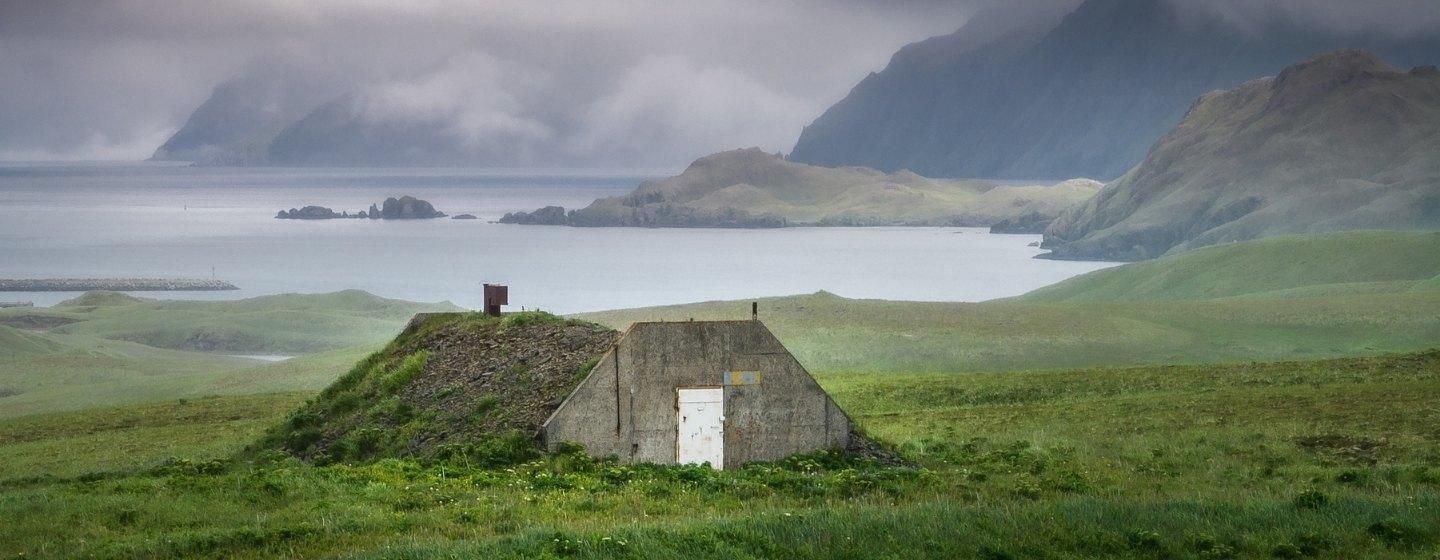ECU Researchers Find Sunken Ships from ‘Forgotten’ WWII Battle


It’s called the “Forgotten Battle,” even though it was the only battle fought on North American soil in World War II.
The struggle centered around the Aleutian Island of Attu (Atux̂), which was captured by Japanese forces in June 1942. Almost a year later, in May 1943, the U.S. military launched an assault to recapture the island. The battle lasted about three weeks.
After American forces triumphed, Attu, which sits about 550 miles from Russia’s Kamchatka Peninsula, was transformed into a military outpost that operated throughout the rest of the war.
Eight decades after the fighting, the Battle of Attu remains the least studied campaign of the war. In July 2024, Eastern Carolina University (ECU) faculty and alumni led the first underwater investigation off Attu Island.
“Overall, the project marks the beginning of what is sure to be an increased focus on the oft-forgotten Aleutian Island campaign and by extension Alaska’s World War II history,” said Jason Raupp, Ph.D., assistant professor of maritime studies in ECU’s history department, in an ECU News Services article.
The ECU team combed the seafloor off the coast of Attu using sonar and a remotely operated vehicle. They were looking for artifacts, including ships and aircraft.
They discovered three ships: the Japanese freighters Cheribon Maru (sunk in 1942) and Kotohira Maru (sunk in 1943) and the U.S. Army’s SS Dellwood (sunk in 1943).
These ships hadn’t been seen in more than 80 years. All were found within Alaska’s state waters.
Researchers say the 3,000-ton freighter Cheribon Maru is covered in so much kelp and other marine growth it can barely be seen. It was sunk by American bombers. At least 15 crew members perished.
(The exact number of casualties is unknown because Japanese records were destroyed, but estimates put the number in the dozens.)
The Kotohira Maru was a 5,000-ton freighter that carried provisions, housing material and fuel for Japanese troops stationed on Attu. It was sunk by a U.S. Navy weather plane. Only two crew members were rescued.
“The Kotohira Maru is a mass grave and when you see it on the seafloor, it’s moving,” Dominic Bush, Ph.D., a recent alumnus of ECU’s coastal resources management program and a research associate of Ships of Discovery told The Island Packet. “Reports say it was hit twice and the bow was broken off, and that’s what we found.”
“It is in amazing condition on a sandy seafloor and really stood out. You can see the masts are still standing and everything is still there, along with the wheelhouse. It gives you a clear picture of what it looked like,” added Bush.
The lone American ship located was the U.S. Army cable layer SS Dellwood. The 3,500-ton ship struck a submerged pinnacle and sank while being towed to a dock.
Bush and Raupp say the high-resolution sonar allowed the team to identify many smaller targets, which likely would have been missed with more traditional forms of remote sensing.
They say the seafloor around Attu is littered with remnants of the war, including anchors, chains, mooring blocks and sunken buoys, as well as construction materials for building a base.
The team also found several sections of anti-submarine netting, which resembles chain mail.
Researchers emphasize their work was noninvasive and nondestructive. No physical samples or artifacts were removed.
Attu is the ancestral home of the Saskinax̂ people, who were imprisoned by Japanese forces when the island was captured. The research team worked with descendants of the Indigenous communities. The island is now part of the Alaska Maritime National Wildlife Refuge.
To learn more about underwater archaeology, watch this Sci NC story from 2017 about research into the Battle of the Atlantic during World War II off the NC coast.